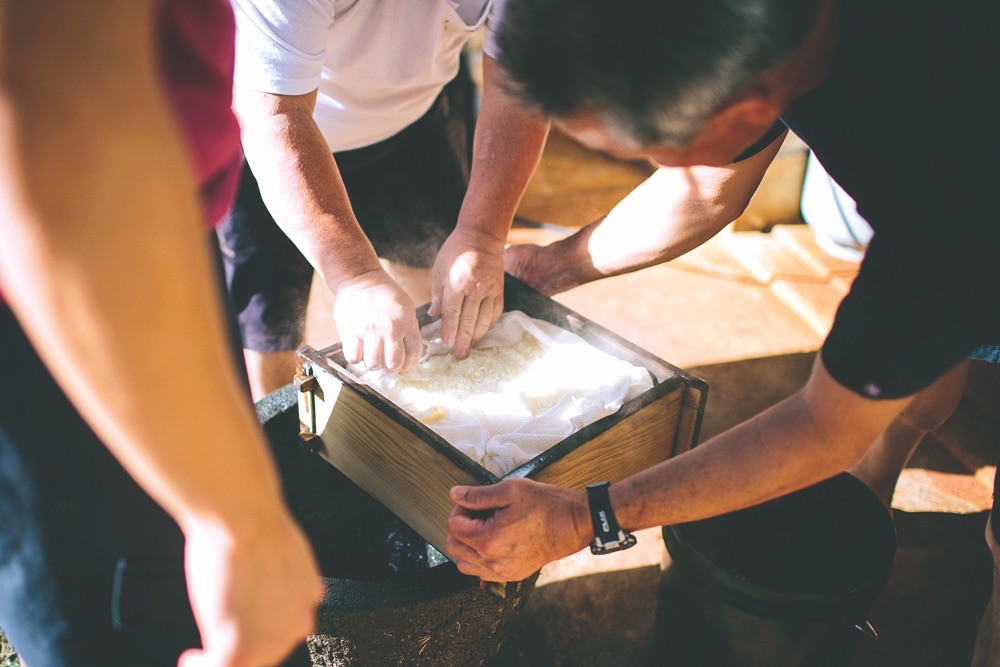Mochitsuki (mochi-pounding) is a Japanese tradition that has become integrated into the local New Year’s celebrations here in Hawai‘i. Generally a day-long activity, it is a way of welcoming the New Year and ensuring good luck and longevity for the years to come.
The mochitsuki celebration typically begins the day before with the washing of rice, which is then left to soak overnight and steamed the next morning. The cooked rice is pounded into mochi with a wooden mallet in a stone mortar until it becomes smooth and sticky. The mochi is then dusted generously with mochiko (sweet rice flour) and shaped into small buns. Mochi can be eaten with various toppings, fried with butter, or (most notably) served in ozoni—a Japanese New Year’s soup. The ingredients and recipe for ozoni vary, but one thing remains the same: those sticky little mochi balls at the bottom of the bowl are filled with happiness and good fortune for the new year.
Mochitsuki, as I’ve come to know it, usually begins around 8:30 a.m. in the kitchen with me and my cousins never quite able to remember just how to cut the vegetables for the ozoni. Then it’s about five hours of chopping, grating, boiling, pounding, kneading, shaping and, of course, eating. Mochi-pounding the “old-fashioned way” always makes me look to the upcoming New Year with a fond sense of appreciation for all the hard work that goes into both making mochi and maintaining a strong family tradition.
Now, as the tradition goes, we can pound all the mochi we want and eat ozoni until it’s coming out of our ears, but this year, as I listened to the steady thwack-thwack-thwack outside, I watched as my sister helped make her first batch of ozoni while my 90-year-old grandmother played with my baby cousin in a house that has seen over 40 years of mochitsuki tradition. And then I realized something. This is what good luck is really all about.
